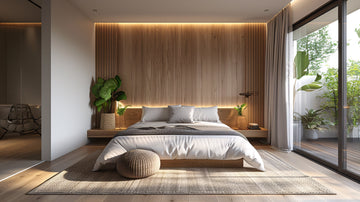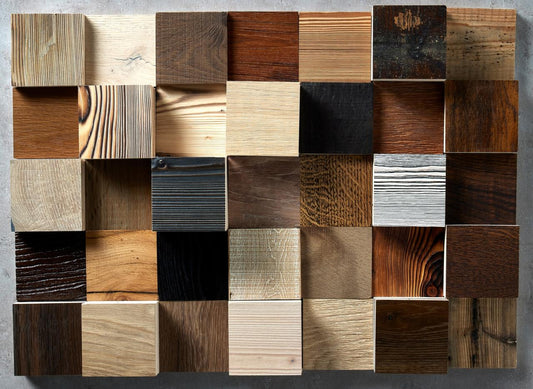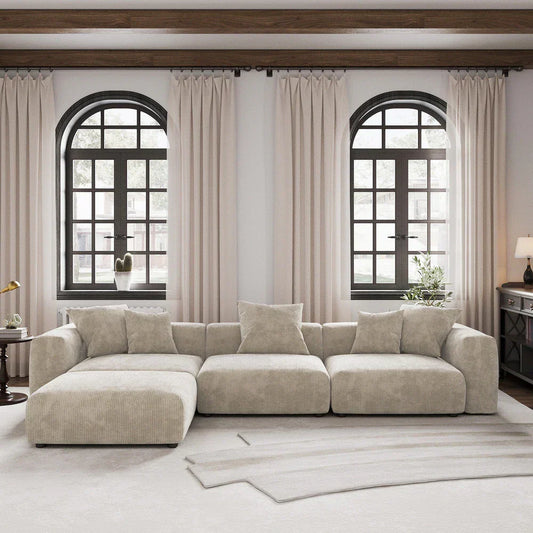
The Art of Mixing Furniture Styles: How to Create a Cohesive Eclectic Look
Blending different furniture styles into a cohesive and eclectic look is one of the most exciting and creative approaches to interior design. Rather than sticking to a single style, mixing furniture styles offers the opportunity to create a space that feels personal, unique, and layered with texture and character. Whether you’re pairing Mid-Century Modern with Art Deco or combining Industrial elements with Boho, the key is achieving harmony between contrasting styles.
In this article, we’ll walk you through how to mix furniture styles seamlessly, giving your home a curated yet inviting feel. With the right balance of bold contrasts and cohesive elements, you can achieve a modern eclectic interior that’s both visually engaging and functional.
1. Understand the Core of Each Style
Before diving into mixing, it’s crucial to understand the foundational characteristics of each furniture style you plan to combine. This helps ensure that you can blend their elements without them clashing.
-
Mid-Century Modern: Known for clean lines, organic shapes, and functional design. This style often features wooden furniture, minimalist silhouettes, and bold pops of color.
-
Art Deco: Luxurious and glamorous, Art Deco is all about geometric patterns, rich materials like lacquer, chrome, and glass, and opulent finishes.
-
Industrial: Raw, unfinished look with exposed brick, metal accents, and wooden surfaces. Industrial design often incorporates vintage elements and neutral color palettes.
-
Boho: Relaxed and free-spirited, Boho interiors feature vibrant textiles, layered patterns, and ethnic-inspired decor, combined with natural materials like wood and wicker.

2. Create a Neutral Base to Build From
The first step in mixing furniture styles is to create a cohesive foundation with neutral tones. Neutral colors like gray, white, beige, and muted pastels will serve as a common thread that ties all the different elements together. By starting with a neutral color palette, you can balance out the bold contrasts that come from mixing different styles.
-
Tip: Use neutral walls and larger furniture pieces (like sofas or large tables) as the grounding element of the room. This allows the more vibrant or statement pieces to shine without overwhelming the space.

3. Pick One Dominant Style to Anchor the Room
While mixing styles is all about experimentation, it’s important to pick one dominant style that serves as the anchor for the space. This dominant style will set the tone for the room and provide a sense of order. For example, you might choose Mid-Century Modern as the dominant style, and then complement it with Art Deco accents and Boho textiles.
-
Tip: The dominant style should inform the larger pieces in the room, such as the sofa, coffee table, and lighting fixtures. Once you’ve established this foundation, layering in other styles will feel more intentional.

4. Mix Materials and Textures for Contrast and Depth
One of the most effective ways to mix furniture styles is by playing with materials and textures. Combining luxurious Art Deco finishes with raw Industrial elements can create a stunning contrast, while pairing Mid-Century Modern wooden furniture with Boho woven textiles adds richness and depth to the space.
-
Tip: Look for complementary contrasts that create interest without feeling jarring. For example, a velvet Art Deco armchair can pair beautifully with a wooden Mid-Century Modern coffee table. Similarly, an Industrial metal bookshelf can be balanced by Boho-style rugs or woven baskets.

5. Incorporate Statement Pieces That Stand Out
Eclectic spaces thrive on statement pieces—furniture or decor that stands out and makes an impression. Whether it's a bold Art Deco mirror, a Mid-Century Modern sideboard, or a vintage Industrial lamp, statement pieces allow you to create focal points in the room.
-
Tip: To keep the look cohesive, choose statement pieces that share a common color palette or theme. For example, a gold-framed Art Deco mirror can echo the brass accents of a Mid-Century Modern chair, creating a natural flow between contrasting styles.

6. Balance Proportions to Maintain Visual Harmony
When mixing furniture styles, proportions play a critical role in ensuring the room doesn’t feel chaotic. If you have a large, ornate Art Deco sofa, balance it out with smaller Mid-Century Modern chairs or Boho-style accessories. Similarly, avoid crowding the room with too many statement pieces; instead, choose a few that truly stand out.
-
Tip: Keep the room visually balanced by using symmetry or asymmetry depending on your preference. For example, symmetrical arrangements can help create order when mixing bold statement pieces. Asymmetry can work well in more relaxed, Boho-inspired rooms.

7. Embrace Layering with Rugs, Pillows, and Art
Layering is key when mixing different furniture styles. Introduce textiles, artwork, and decorative pieces to tie the different styles together. For instance, layering Boho rugs over Mid-Century Modern floors or pairing Industrial-style metal art with Art Deco furniture can create an eclectic yet cohesive vibe.
-
Tip: Choose cohesive fabrics like linen, wool, or cotton for textiles to create a natural flow. Pillows and throws in bold geometric patterns (Art Deco) or ethnic prints (Boho) can create visual harmony when thoughtfully layered.

8. Use Lighting to Tie Styles Together
Lighting can serve as both a functional and aesthetic element in a room, helping to unify the different styles. Consider using Art Deco-style chandeliers or industrial pendant lights to create a focal point in the room, while Mid-Century Modern table lamps or Boho floor lamps can be used to soften the space.
-
Tip: Use gold, brass, or chrome finishes in lighting fixtures to blend the luxury of Art Deco with the industrial aesthetic. Consider pairing soft, warm lighting with cleaner, sleek designs for balance.

9. Add Greenery and Natural Elements
Incorporating plants into your eclectic design is an easy way to soften the contrast between different furniture styles and add a layer of warmth and life to the space. Indoor plants and greenery can provide texture and color, blending seamlessly with both Industrial and Boho styles.
-
Tip: Use large plants like fiddle-leaf figs or pothos to add height, while small succulents or herb pots can enhance the Mid-Century Modern or Art Deco look. Incorporating natural materials such as wood, stone, and rattan into your decor will also tie the different furniture styles together.

Conclusion
The art of mixing furniture styles is all about achieving a balance between contrast and cohesion. By understanding the key elements of each style, creating a neutral foundation, and using a thoughtful approach to texture, materials, and proportions, you can create a cohesive eclectic look that’s both visually engaging and comfortable. Whether you’re blending Mid-Century Modern with Art Deco or Industrial with Boho, the key is to create a space that feels curated, intentional, and full of personality. With these tips, you can confidently mix different furniture styles and craft a room that tells a unique story.







comments